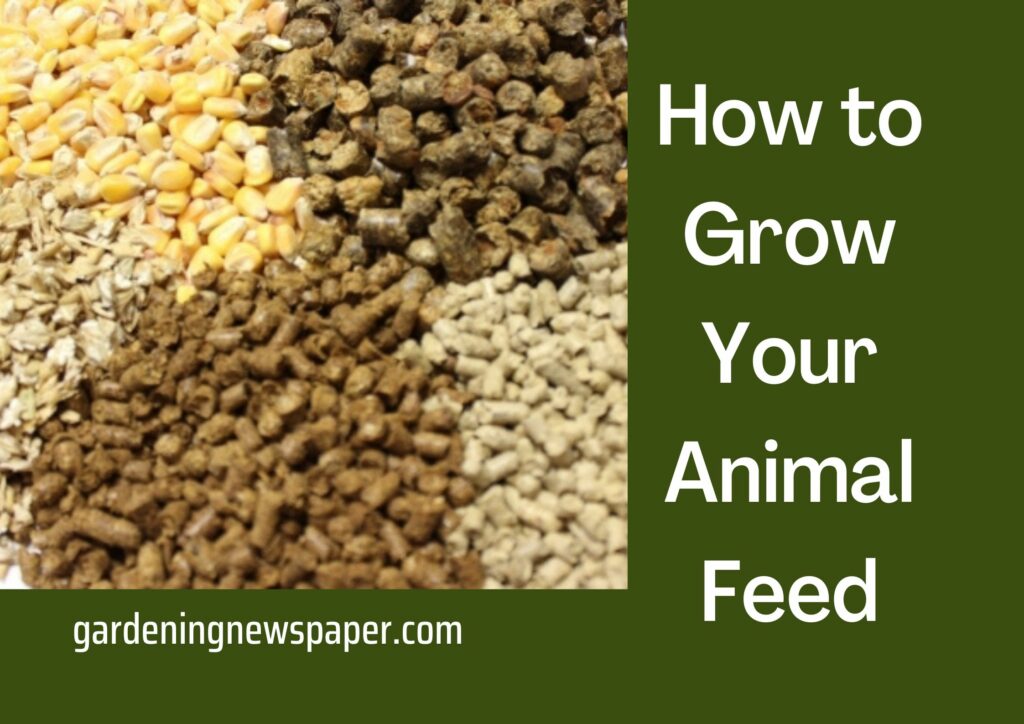How to Grow Your Animal Feed

Feeding your animals can be daunting because you want to ensure that they get access to the best possible nutritional profiles so they can grow strong and healthy. One of the best ways to feed your livestock with natural options is to grow fodder for nourishment. Fodder results from soaking whole grains and permitting them to grow over seven days before offering it to your animals as feed. This is a simplified and inexpensive way to provide nutrients to your animals.
- The nutritional profile of fodder arguably exceeds that of other alternatives due to the fermentation process it undergoes as it is soaked.
- Animals experience an easier time digesting this food while also absorbing its abundant nutritional density.
- Fodder is also very cost-friendly as 50 pounds of seed can grow into 200 pounds of food.
- Homesteading is about finding self-sufficient ways to thrive in a world that has become accustomed to outsourcing much of the labor required to keep us functional.
- Being able to not only grow your own animals’ food but also feed them with your supplies is an example of living a self-sufficient lifestyle to the highest possible capacity.
- In addition, growing fodder is fast and compact. The soaking process runs for about a day, and in a week, you can provide quality nutrition for your animals.
If you are unsure which grains to select for your growing process, then consider whole oats, barley, or wheat since these are your most basic options and are available in most places. However, you can sprout virtually any seed; ensure that they are soaked and grown in the prescribed time frames.
Aside from growing fodder, there are several other things that you can do to get your animals fed cost-effectively. The most obvious option would be to leave your animals out in the pasture. This is great for those who have larger land plots because they can simply fence the areas and let their animals out to graze safely.
This laissez-faire method works best for livestock like cows and goats. Smaller animals like rabbits should probably be placed in a rabbit tractor and moved to the area specifically for a feed session.
You can always create a second garden if you have the space for it.
- This garden would be strictly for your livestock, where you would grow fresh fruits and vegetables for their consumption.
- It will require double the amount of effort, but you could be comforted by the fact that your animals are being fed highly nutritious foods. In some cases, you won’t necessarily need to have an extra garden to feed your animals.
- You could simply give them any excess fruits and vegetables that you may have from your harvest.
- There is the added benefit of being able to freeze your produce from the livestock garden and give it to your animals to eat for the winter months as well.

- If growing an extra garden for your animals is not feasible due to space constraints (which mostly applies to those with a backyard homestead), then you could consider growing vertically. Utilizing vertical space will allow you to fit more products in your garden. Then, this abundance could be shared with your animals.
- Container gardening is another method that is effective for smaller homesteads. Placing certain foods in containers and being able to provide them to your animals as feed once they have grown is a wonderful space-saving strategy.
Hay
Hay is one of the cheaper ways that you can feed your animals.
- Donkeys, goats, rabbits, horses, and cows enjoy consuming large amounts of hay. Hay is a wonderful dietary option for these animals as it provides a significant amount of fiber that will facilitate their bowel movements.
- Rabbits are known not to survive long when they don’t consume enough hay because their bowels become blocked. If you don’t have a pasture on your land, you should consider purchasing hay from your local farmer.
- However, this may not be feasible for everyone as hay could interfere with your tight budget plan. In that case, you can simply allow hay to grow if you have the extra land and cut it up for your animals to graze.
Table scraps
Table scraps are another affordable method of getting your animals food. It is most common for homesteaders to take their table scraps and prioritize using them as compost.
However, your animals could benefit from consuming these as well. Your animals will create compost for you, but your table scraps can feed the very animals to continue the cycle. This is a better investment strategy. Try to be meticulous about retaining all the excess pieces of vegetables next time, so they can be easily placed in a compost bucket and fed to your animals. This also extends to any leftovers from your meals.
The benefits of cold-frame greenhouses include the ability to grow heartier vegetables over the winter and the lack of energy required to power them. Use your cold-frame greenhouse to grow extra food for your animals if you have one.
However, if your cold-frame greenhouse is already stocked with enough food for your household, you might want to think about building an additional cold frame for your animals. This would grant them an abundance of food to consume for most of the year as the cold frames would still operate during the winter months. This is an excellent long-term strategy for nutritional availability.
Finally, the brush is another alternative feed you can cultivate on your own. If you own land, you’ll almost certainly occasionally have a brush. Therefore, don’t throw away the trimmings from trees or bushes as these could be utilized to feed your animals. However, brushes could be more applicable for goats as they tend to be the animal that enjoys consuming them the most.
